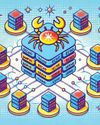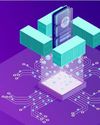Connecting every ‘thing’ that we see around us to the Internet is the fundamental idea of the Internet of Things (IoT). There are many operating systems to get the best out of the things that are connected to the Internet. This article explores four popular operating systems for IoT — Ubuntu Core, RIOT, Contiki and TinyOS.

To say that life is running on the Internet these days is not an exaggeration due to the number and variety of services that we consume on the Net. These services span multiple domains such as information, financial services, social networking and entertainment. As this list grows longer, it becomes imperative that we do not restrict the types of devices that can connect to the Internet. The Internet of Things (IoT) facilitates connecting various types of ‘things’ to the Internet infrastructure. By connecting a device or thing to the Internet, these things get the ability to not only interact with the user but also between themselves. This feature of a variety of things interacting among themselves to assist users in a pervasive manner constitutes an interesting phenomenon called ambient intelligence.
IoT is becoming increasingly popular as the types of devices that can be connected to it are becoming more diverse. The nature of applications is also evolving. Some of the popular domains in which IoT is getting used increasingly are listed below
Smart homes
Smart cities
Smart agriculture
Connected automobiles
Smart shopping
Connected health
As the application domains become diverse, the need to manage the IoT infrastructure efficiently is also becoming more important. The operating systems in normal computers perform the primary functions such as resource management, user interaction, etc. The requirements of IoT operating systems are specialised due to the nature and size of the devices involved in the process. Some of the important characteristics/requirements of IoT operating systems are listed below
A tiny memory footprint
Energy efficiency
Connectivity features
Hardware-agnostic operations
Real-time processing requirements
Security requirements
Application development ecosystem
Esta historia es de la edición September 2019 de Open Source For You.
Comience su prueba gratuita de Magzter GOLD de 7 días para acceder a miles de historias premium seleccionadas y a más de 9,000 revistas y periódicos.
Ya eres suscriptor ? Conectar
Esta historia es de la edición September 2019 de Open Source For You.
Comience su prueba gratuita de Magzter GOLD de 7 días para acceder a miles de historias premium seleccionadas y a más de 9,000 revistas y periódicos.
Ya eres suscriptor? Conectar

Helgrind: Detecting Synchronisation Issues in Multithreaded Programs
Let's explore how Helgrind can be used to detect and debug multithreading issues with the help of a multithreaded C program.

The Perfect Process of Booting a PC
Booting a PC seems as simple as eating a cake. But are you aware of all that goes on behind-the-scenes to bake a delicious cake or seamlessly boot a PC?

Exploring eBPF and its Integration with Kubernetes
eBPF, a game-changing technology that extends the capabilities of the Linux kernel, offers significant advantages for Kubernetes networking. It also greatly improves Kubernetes observability by capturing detailed telemetry data directly from the kernel. Read on to find out how its integration with Kubernetes has immense benefits.

Deploying Generative AI LLMs on Docker
Built on massive datasets, large language models or LLMS are closely associated with generative Al. Integrating these models with Docker has quite a few advantages.

Containerisation: The Cornerstone of Multi-Cloud and Hybrid Cloud Success
Open source containerisation software provides the flexibility, cost-effectiveness, and community support needed to build and manage complex multi-cloud and hybrid cloud environments. By leveraging this software, businesses can unlock the full potential of multicloud and hybrid cloud architectures while minimising vendor lock-in risks.

From Virtual Machines to Docker Containers: The Evolution of Software Development
Containerisation and Kubernetes have eased software development, making it faster and better. Let's see where these are headed, looking at trends that are making life easier for developers.

India's Leap in Supercomputing: Innovating for Tomorrow
As India strides towards self-sufficiency in supercomputing, embracing this evolution isn't just an option-it is pivotal for global competitiveness and technological leadership.

SageMath: A Quick Introduction to Cybersecurity
In the previous articles in this SageMath series, we delved into graph theory and explored its applications using SageMath. In this seventh article in the series, it is time to shift our focus to another crucial subfield of computer science: cybersecurity and cryptography.

Efficient Prompt Engineering: Getting the Right Answers
OpenAl's GPT-3 and GPT-4 are powerful tools that can generate human-like text, answer questions, and provide insights. However, the quality of these outputs depends heavily on how you frame the input, or prompt. Efficient prompt engineering ensures you get the right answers by designing inputs that guide the AI towards relevant, clear, and useful responses. Let's find out how to craft effective prompts with examples.

Analysing Linus Torvald's Critique of Docker
This article looks at Docker's security flaws, particularly its shared-kernel model, and contrasts it with traditional VMs for better isolation. It discusses Linus Torvalds' concerns, explores mitigation techniques, and proposes a roadmap for building a more secure containerisation platform using hardware-assisted virtualisation, true isolation, and a robust orchestration layer.